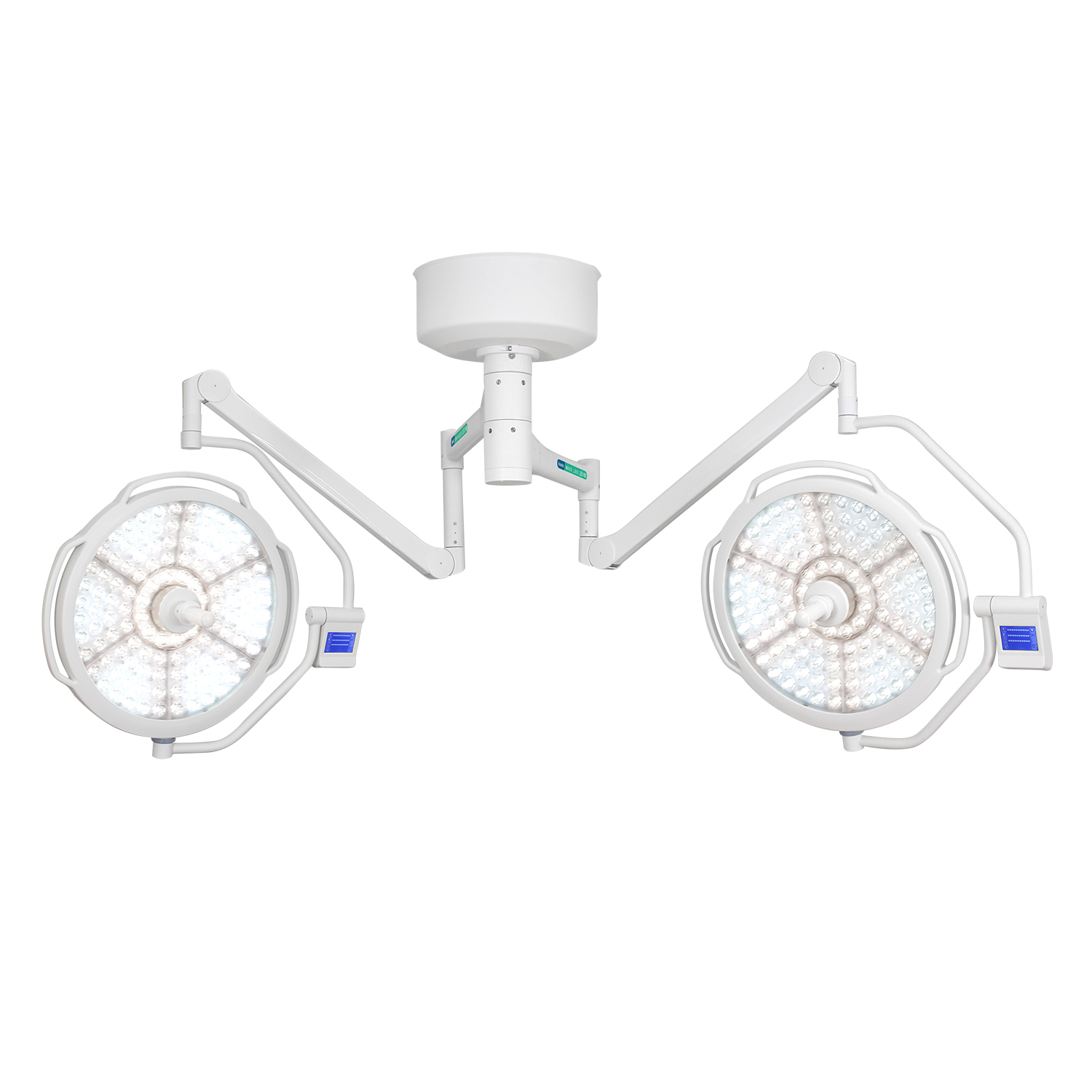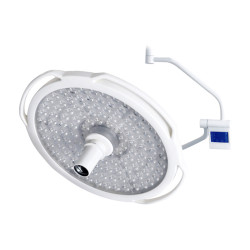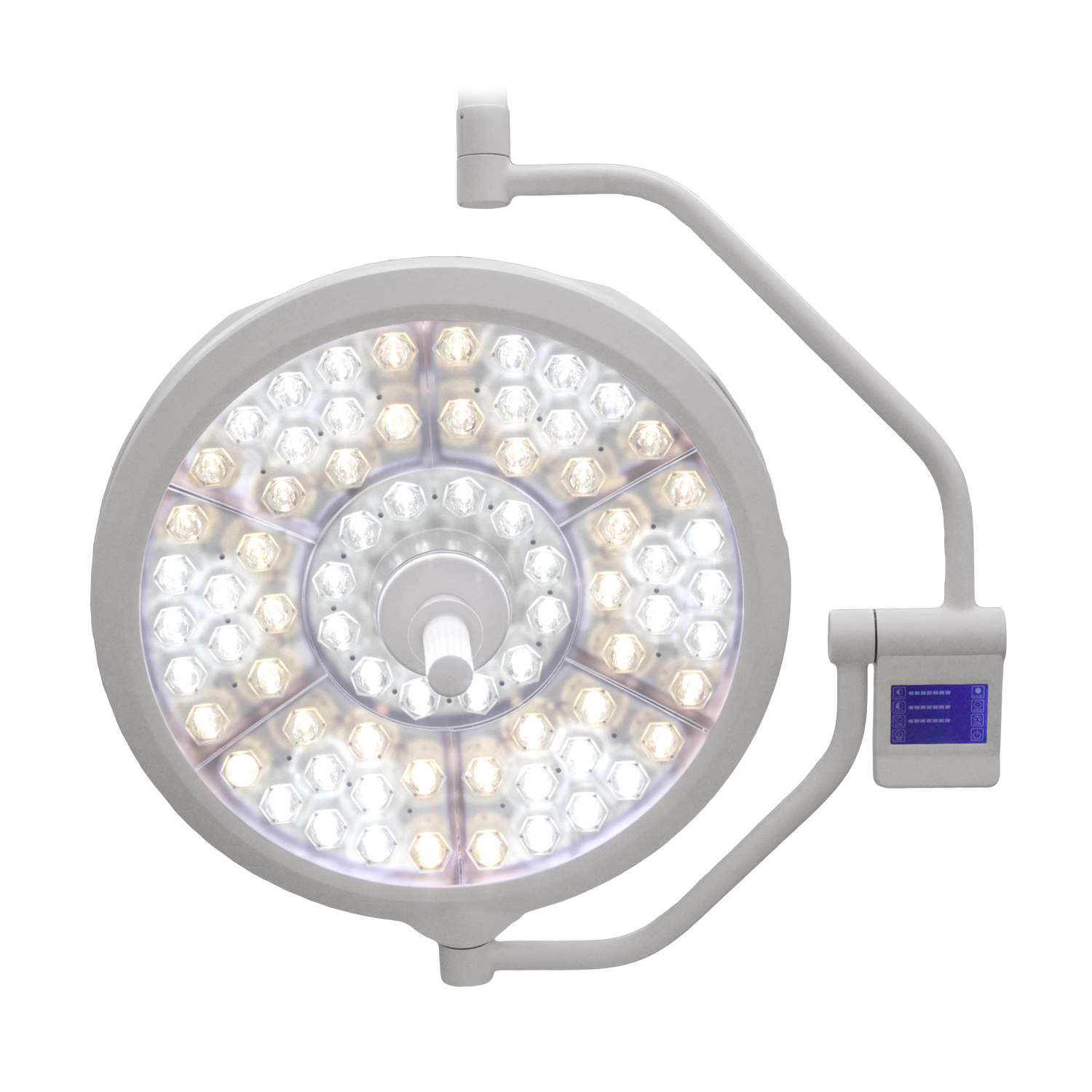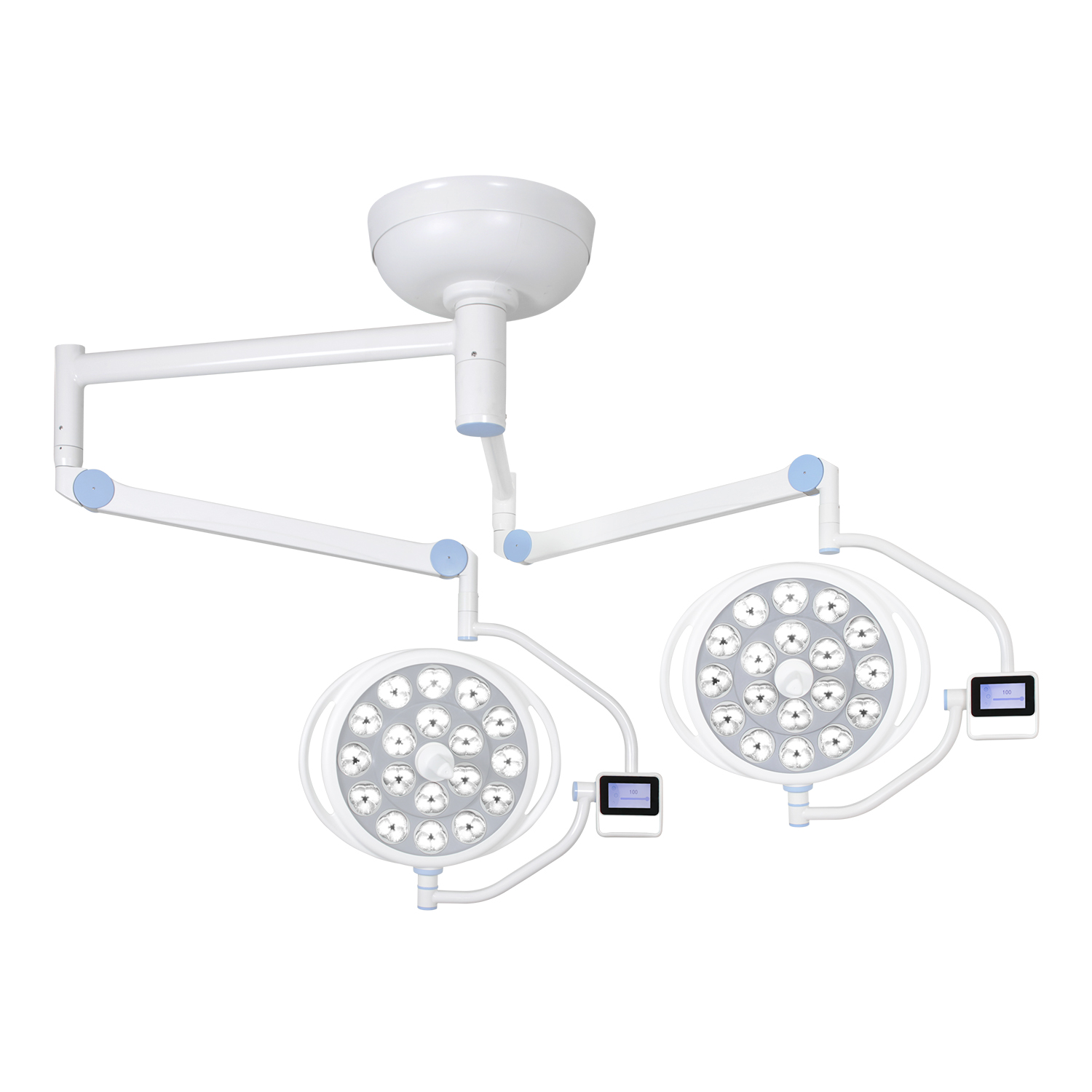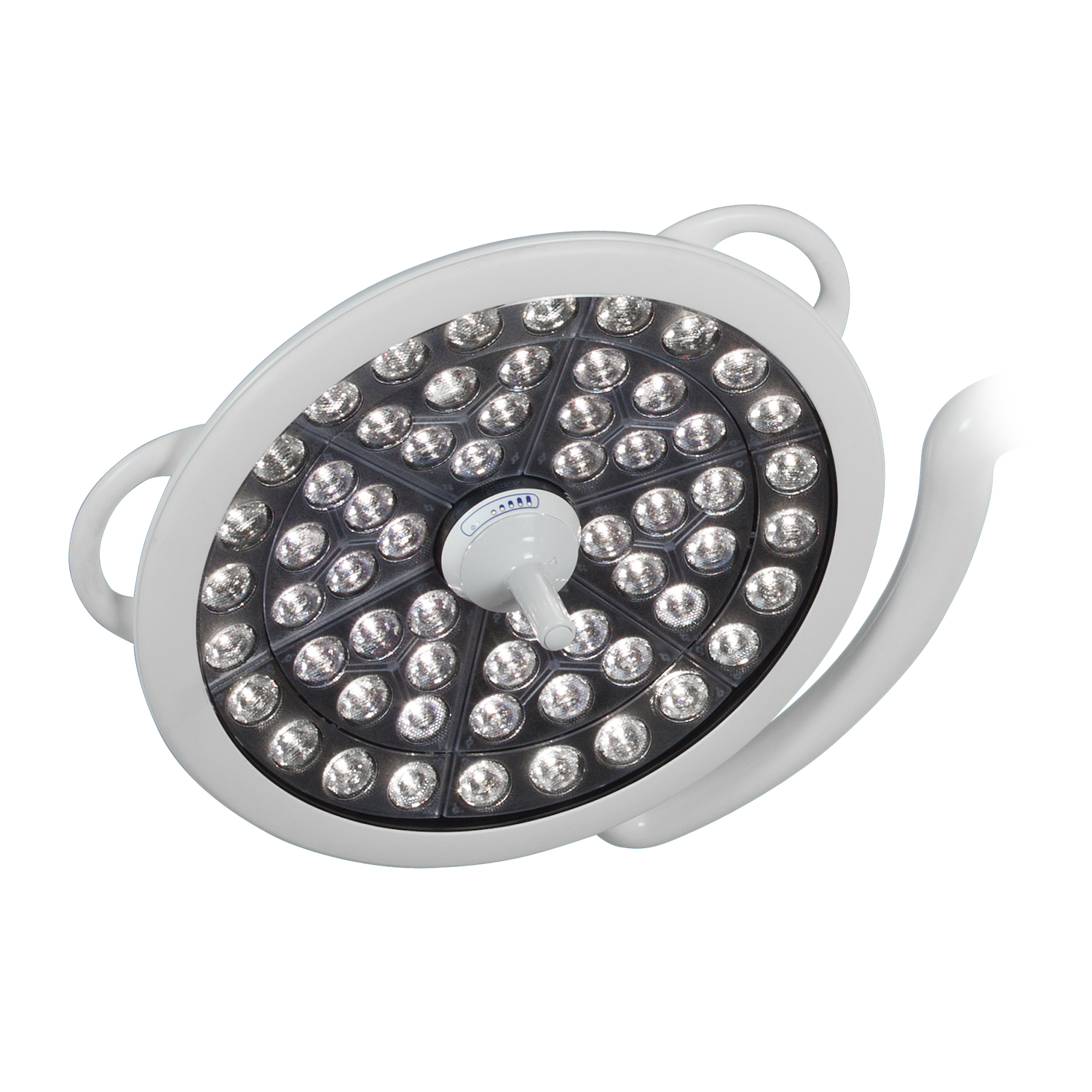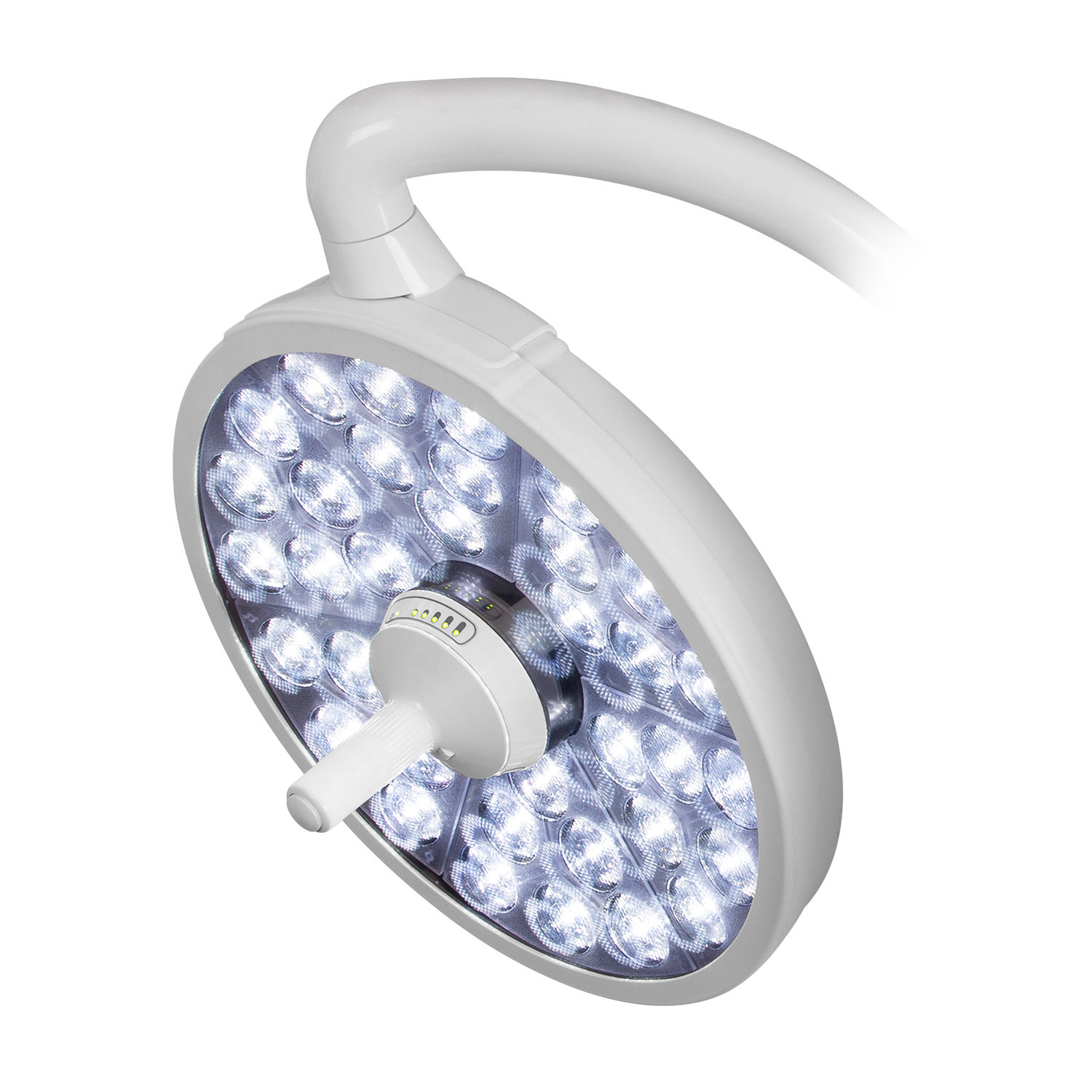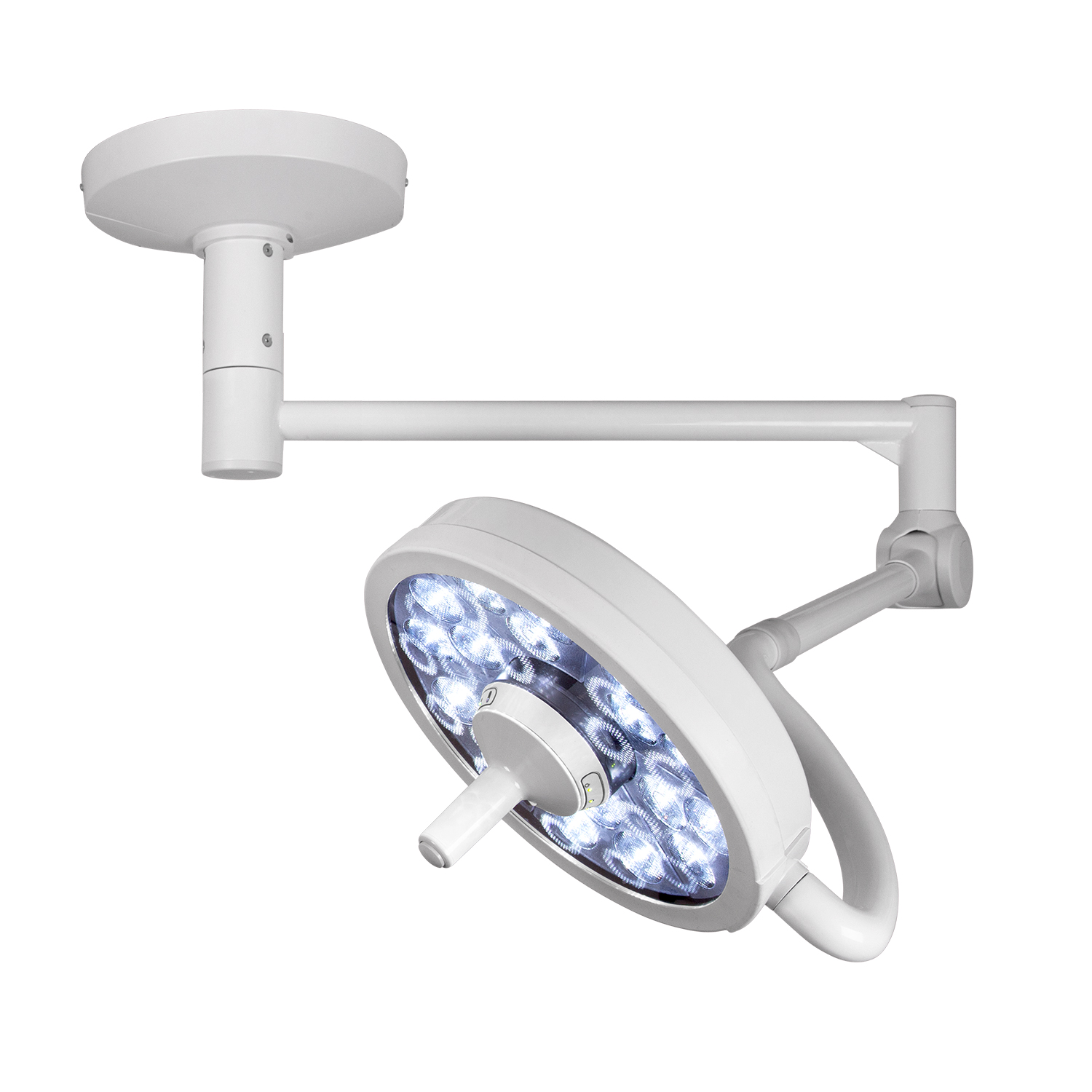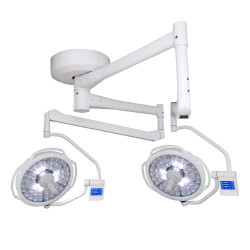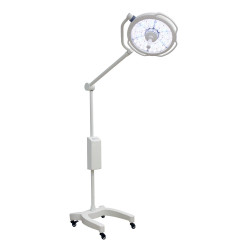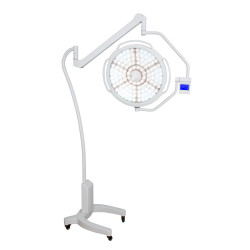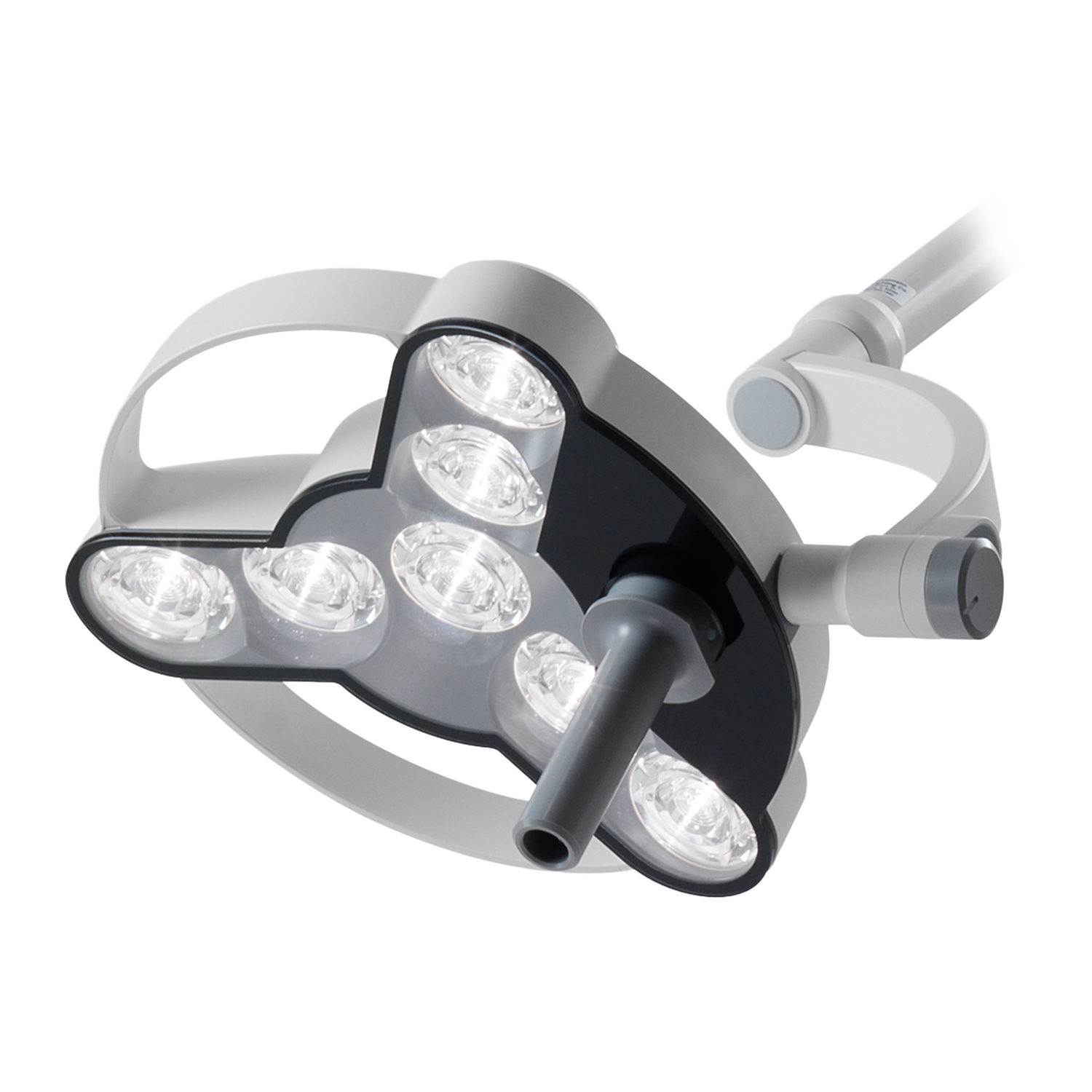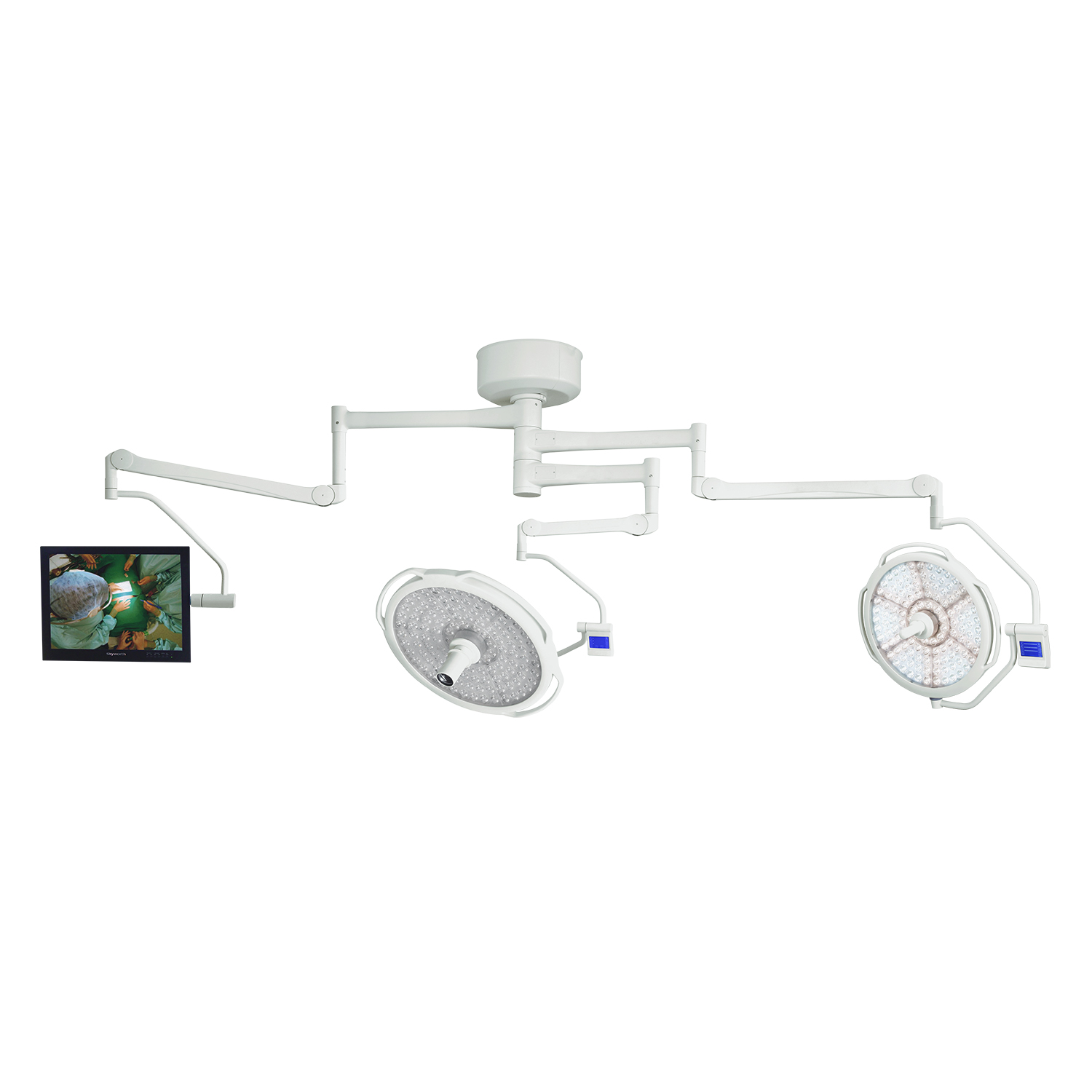Understanding Key Surgical Lighting Terms
When shopping for surgical lighting, there are a few key terms you need to know: Illumination, color temperature, color rendition index, light field diameter, lifespan.
- Illumination: Illumination refers to the light intensity output of the surgical light head, which is measured in lux. The standard distance for measuring lux on a surgical light is meter. Most lights don’t produce light intensity beyond 160,000 lux, and lights that measure under 40,000 lux aren’t considered fit for surgical use.
- Color Temperature: Color temperature is measured in Kelvin, and it refers to the overall color produced by the light source. Warm colors like red and yellow are at a lower Kelvin temperature, whereas white and blue are higher. Daylight is considered approximately 5,800 Kelvin. When you’re searching for surgical lights, make sure they can deliver within the 3,000 – 6,700 Kelvin range.
- Color Rendering Index (CRI): The CRI measures the quality of light produced, as related to perfect visualization. Bright daylight is considered the optimal light for viewing the natural color of objects and has a CRI of 100. Make sure the surgical lights you choose have a CRI between 80 and 100.
- Lifespan: Surgical lights manufactured today typically last for 40,000 to 60,000 of use, but this number isn’t as straightforward as it seems. Most surgical light lifespan estimations are calculated to measure how long a light will produce up to 70 percent of its original output, not how long it can deliver full intensity. It’s important to be aware of this discrepancy when researching surgical lights for your facility.
All product and company names are trademarks of their respective holders. Use of them does not imply any affiliation with or endorsement or sponsorship by them.
